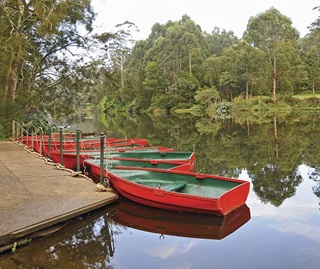Our socio-economic assessment process involves developing a socio-economic profile for the community/region where land is being considered for acquisition. We then compare this profile to historic data.
If the characteristics of the land and the community are similar enough to those in historical data, the socio-economic impacts are assessed using the Parks Socio-Economic (PSE) model. This model is likely to be applicable to most acquisition proposals.
If the profile is significantly different to historical data, the PSE model may not adequately estimate the socio-economic impact of the proposed land acquisition. In this case, a site-specific economic impact assessment is required.
For large-scale acquisitions, like Yanga Station near Balranald or Toorale Station near Bourke, the PSE model will be applied and a detailed 'triple bottom line' assessment prepared to the extent possible. Acquisitions of this scale are rare and historical data used in the PSE model may not provide an adequate assessment of impacts on local communities/regions.
Process
The steps in our socio-economic activity assessment include:
1. Decide whether a socio-economic assessment is necessary
A socio-economic assessment will be undertaken for all acquisition proposals unless the proposal:
- is a complete inholding essential to improve the management of an existing reserve
- represents a minor boundary adjustment (being less than 20% of the size of the existing reserve)
- is already subject to environmental protection through zoning in a local environmental plan (E1, national park and nature reserves or E2, environmental conservation) or is subject to a conservation covenant on land title.
If a socio-economic assessment is not required, but the acquisition proposal is contentious, professional judgement will be used to decide whether to conduct a socio-economic assessment.
2. Prepare a local socio-economic profile
This includes:
- the details of a proposed land acquisition (including size and location)
- the characteristics of the local community/region (such as population demographics, industry structure, employment).
3. Compare the socio-economic profile to historic data
If the land being acquired and the community are deemed similar enough to those in historical data, the socio-economic activity impacts will be assessed through the application of the PSE model (see step 4). If the profile is significantly different to historical data, a more detailed economic impact assessment will be undertaken (go to step 5).
4. Apply the PSE model
The PSE model will be used to assess socio-economic impacts of the proposed land acquisition, on the basis that previous acquisitions with similar land and community characteristics strongly indicate the expected impact of the proposed acquisition.
5. Undertake more detailed and community specific socio-economic impact assessment
Where the socio-economic profile is significantly different to historical data a case-specific economic impact assessment will be undertaken.
The results of case-specific assessments will be fed back into the PSE model to improve and adapt it for future applications.
 The establishment of new parks can provide social and economic benefits to local communities.
The establishment of new parks can provide social and economic benefits to local communities.


































